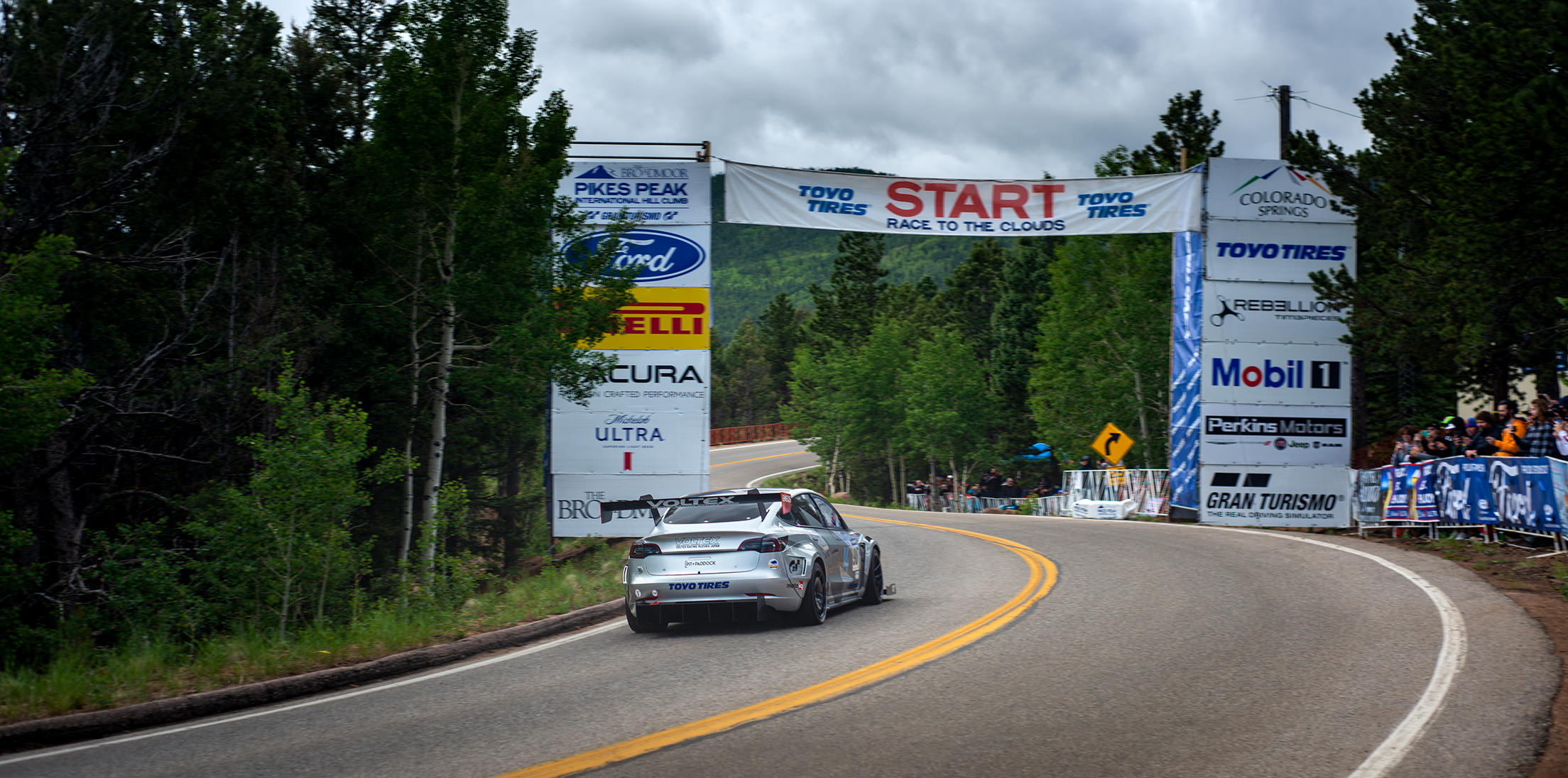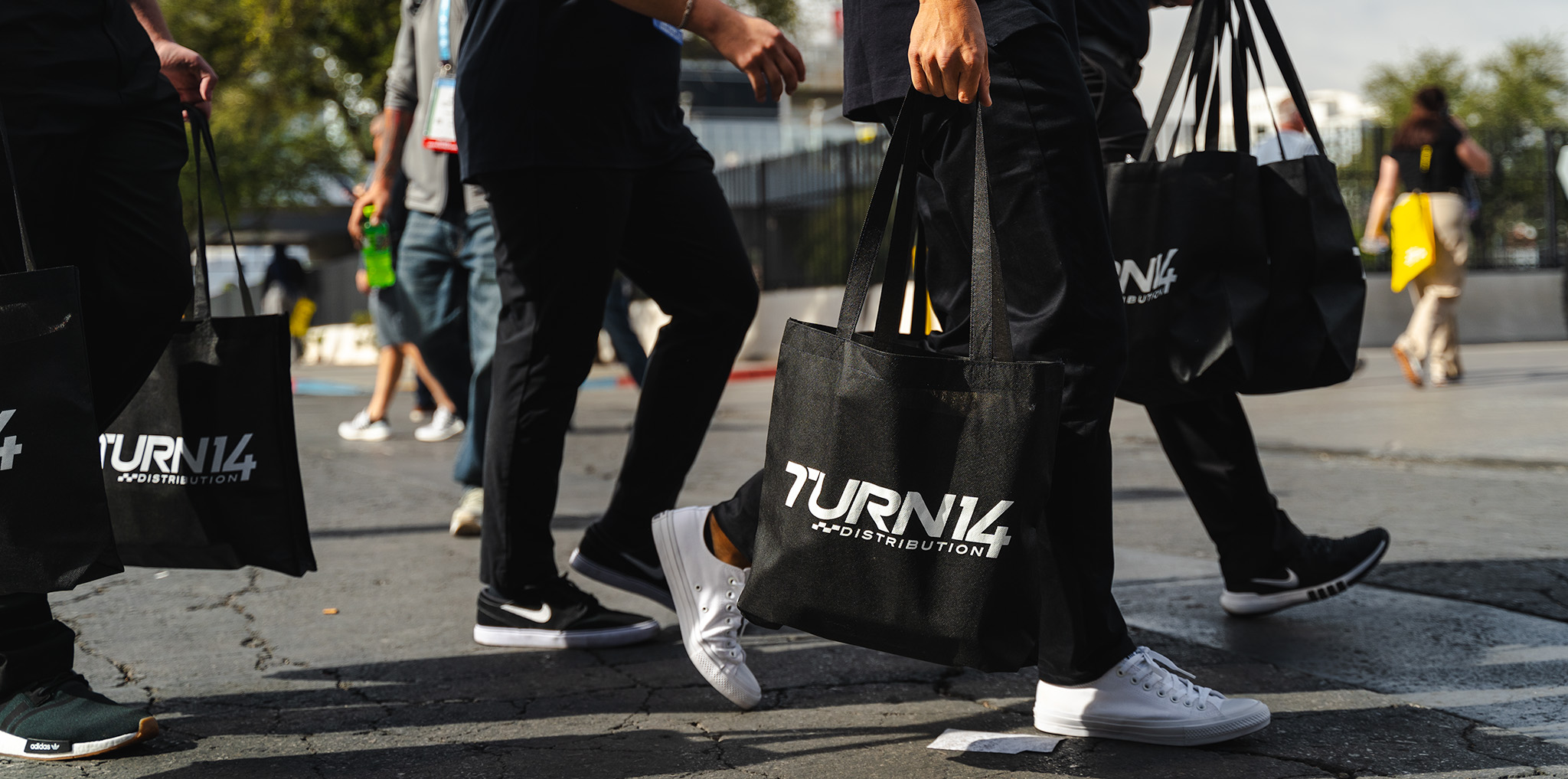- The Evasive Motorsports x Turn 14 Distribution Tesla Model 3 team qualified 2nd in class and 11th overall with a 4:15.653 in the lower section.
- Dai Yoshihara powered through an unforeseen glitch on race day to complete the 2021 Pikes Peak International Hill Climb but slower than anticipated.
Success is a dynamic word with a range of definitions depending on who is asked. What may be considered a failure to some is deserving of the highest praise and recognition from others. The scale lies in the expectations set forth beforehand. The Broadmoor Pikes Peak International Hill Climb is grueling, intense, dangerous, and unlike any other race in the world. It’s a one-off event where, no matter how factory-backed or financially supported competitors may be, no one confidently guarantees a winning result.
The time trial — ascending to 14,115 feet of elevation, through 156 turns, over 12.42 miles right here on our home soil in the United States — causes competitors to prepare for the worst and hope for the best. Dozens of drivers and teams from all over the world travel to Colorado Springs, CO, every year to try conquering the road up to Pikes Peak’s summit, and only a handful are rewarded with the class or overall win they desire.
In 2021, one of the more exciting entrants for this irreplaceable race was Formula DRIFT Pro Champion Dai Yoshihara, piloting the Evasive Motorsports x Turn 14 Distribution Tesla Model 3 Performance.
As we have in past years, we were on-site to follow Evasive Motorsports’ journey from build-up and testing to unveiling and into race day itself. It’s a long road that requires excessive planning, tuning, and engineering to warrant the hope of success. We caught up with the co-founder of Evasive Motorsports, Mike Chang, to elaborate on what the 2021 PPIHC journey entailed.
Let’s go way back. When did the idea for an EV Pikes Peak contender first pop into your head, and what spurred the thought?
I’ve always been a fan of EVs ever since the first Tesla Model S was released. I personally have owned both a Model S and Model X. With the increased popularity of Teslas — more specifically Model 3s — I thought it would be a fun project to turn one into a race car and run Pikes Peak.
When did the idea come to fruition, and what specific moment made Pikes Peak 2021 a reality?
When we purchased the car in late 2020 and started modifying it for Buttonwillow Raceway, we were surprised at the car’s pace. With minimal mods, we set the EV production record at Buttonwillow with a 1:52 lap. That’s when we knew we had to go all out with it.
How did the build and the setup for the Tesla leading up to Pikes differ being fully electric?
We had to pay a lot of attention to the car’s cooling system and onboard electronics. Since this is a first for us, a lot of the challenge was figuring out how the car is programmed from the factory.
What was the goal for the car going into race week?
The goal was always to push everything to the limit while also getting Dai safely up the mountain. In the process, we learned a lot about the car, ourselves, and how we can improve next time.
How did the week of practice differ this year from past years?
It was the complete opposite of last year. The car ran flawlessly during the entire practice week. There were no real issues besides getting Dai as much seat time as possible in wet and dry conditions.
Walk me through the day of qualifying and where the car ranked:
On the third run of the day, as Dai was getting more comfortable with the course and the car, the battery started to drain and didn’t provide as much power. We actually had some glitch in the TC system on qualifying day, but Dai still managed to qualify 2nd in class and 11th overall.
What was race day like from start to finish?
Race day happened really quick. This year, there was snow on the top section, so the run was cut short. Since we were in the Exhibition class, we were one of the first cars to go. Unfortunately, the car ran into a soft glitch that caused it to go into limp mode at the start line, but Dai continued up the mountain anyway. I only wish this issue happened to us during practice so that we could have come up with a procedure for Dai to try to fix it. It turns out, the glitch that caused the car to run in limp mode could have been reset by simply restarting the car. Obviously, we were all very disappointed that we didn’t get a full-power run this year. However, since the course was cut short anyway, we are motivated to come back next year for the 100th running of Pikes Peak and attempt to summit the mountain again.
If you had to describe the Pikes Peak International Hill Climb using one word, what would it be?
Emotional
Mike, thank you so much for going over that with us. In comparison to last year’s emotional rollercoaster, it seems like this year was more of a free fall with a parachute, but we’re glad you guys still made it to the finish line.
It might not have been the success you had expected but finishing the course on its own feels like success to me. Let alone doing so while pioneering a highly modified, relatively unknown EV entry into such a demanding event and battling winter conditions with unforeseen glitches.
We’re excited to hear you’re already thinking about PPIHC in 2022, and we’ll be right there with you to follow the journey again.
[table id=76 /]















































































